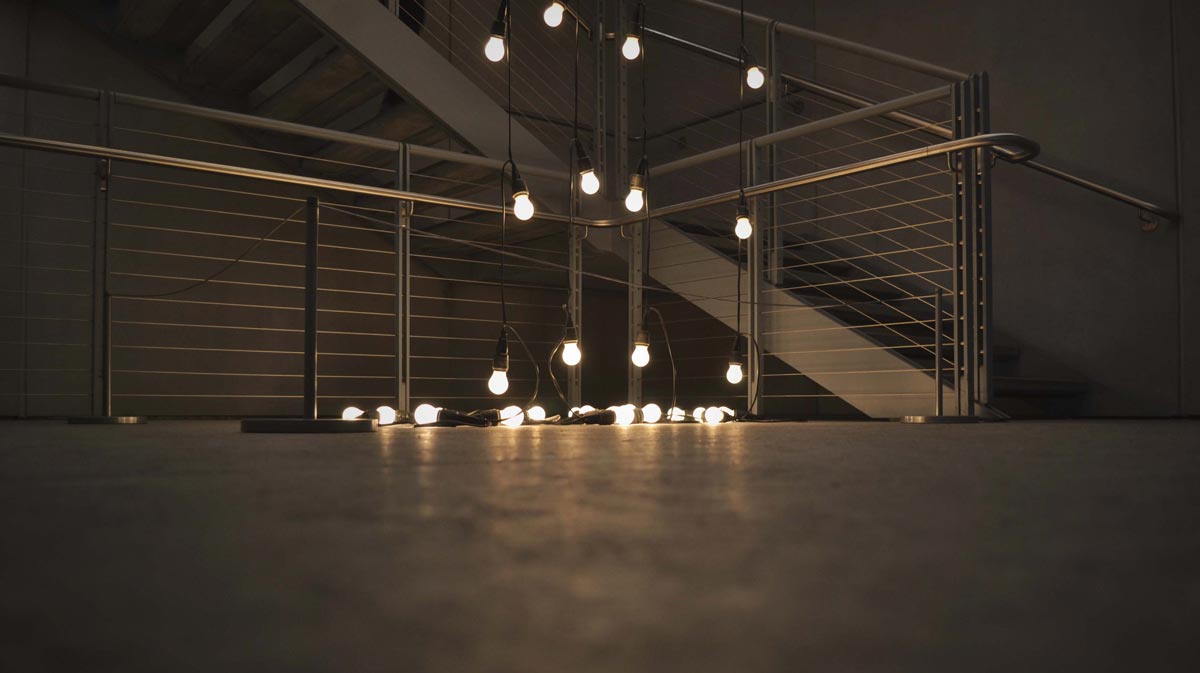Both clarity and shadows are one more tool to create ambiances, we can say that architecture makes spaces and light defines them. Illumination interacts with volumes, colors, and materials and its presence, when well directed, streamlines, beautifies, focalizes, and supports the creation of the atmosphere required by a specific design.
This fleeting matter, that models three-dimensional space in contact with its shapes and textures, has the decisive influence on how we perceive architecture. Through light, we can limit spaces, lead pathways, highlight functional areas, mark accents, or create sensations.
Light: “physical agent that makes objects visible” and illumination: “set of lights in a place used to brighten it”, both according to RAE’s dictionary definition in Spanish, become the starting point of architectural lighting, which is a set of light treatment techniques oriented to lighting indoor or outdoor spaces.

A good design and lighting set up is not only the vehicle through which architecture comes to life at night, but it can also modify the perception that the user of the architectural space can create of it in a substantial way; it can also change an environment without the need for furniture, screens, signals, or other elements; it allows to create aesthetically nice sensations, which improves comfort for users; and if this weren’t enough, it helps optimize the economic and energetic expenditure.
The planning of a lighting concept in a project shall consider the diverse sensations we wish to transmit about the space where they are located and use different light treatment techniques; like for example, allied light, which turns an object into the focal point of certain room; the contrast between light and shadows, which offers dynamism; or gradient light, which emphasizes the rough texture of a wall, thus creating a game of light and shadows.

And we can go on with more examples on how integrated light (LED technology is a good resource) brightens and limits without filling the space with lamps; the expansive one, with lights that are projected from the ceiling, turn eyes up and provide the feeling of height; the flexible one, which is formed by several sources, essential for saving energy by allowing just one light to be on for each activity, or the adjustable one, which has twice as much energy-saving and the possibility to recreate several environments from one light source; the safe one, which lights up paths, like a stairway, in a subtle manner and without hurting the eyes, by placing built-in lights on the lower part of the wall; the hierarchy one, which depending on the direction or intensity of light determines the order in which the eye pays attention.
The environmental, which creates a nice atmosphere without being the main source of light (dimmer light tends to soften the ambience); the socializing one, which favors coexistence through an homogeneous lighting, since it doesn’t create corners or private areas, and allows each person to perceive the space globally; the subtle one, ideal to extend after-dinner conversations; the biodynamic one, which produces neurophysiological stimuli (for resting, wellness, or cognitive capabilities) similar to sunlight; the stimulating one, which invites to activity through the use of white lights with full-spectrum or enriched ones in blue; or the relaxing one, which favors rest through warm lights of less intensity and with no blue color in their spectrum. Anyway, there are multiple options where the best lighting and ambience project is achieved through the planned combination of the different kinds of light available.

The key for a space to be cozy and functional is in the mix of three kinds of illumination: general, environmental, and functional. First, the design process shall consider the kind of activity to be performed within the space, the amount of light required, the color and temperature to be used for light. Then, the distribution of light in the space to be illuminated, whether indoors or outdoors. And finally, luminaries are included, along with kinds of lamps and a control system.
Architectural lighting should draw attention, but without overshadowing the space. The development of a project that transmits different emotions of something integrated into the environment needs for illumination to accompany architecture, to accompany the object.
Artificial light is no longer seen as a tool exclusively used to provide the essential amount of light that allows for a functional activity to be carried out. Illumination has become an artistic resource and a multi-faceted tool, which transcends the aesthetic plane beyond functionality.


